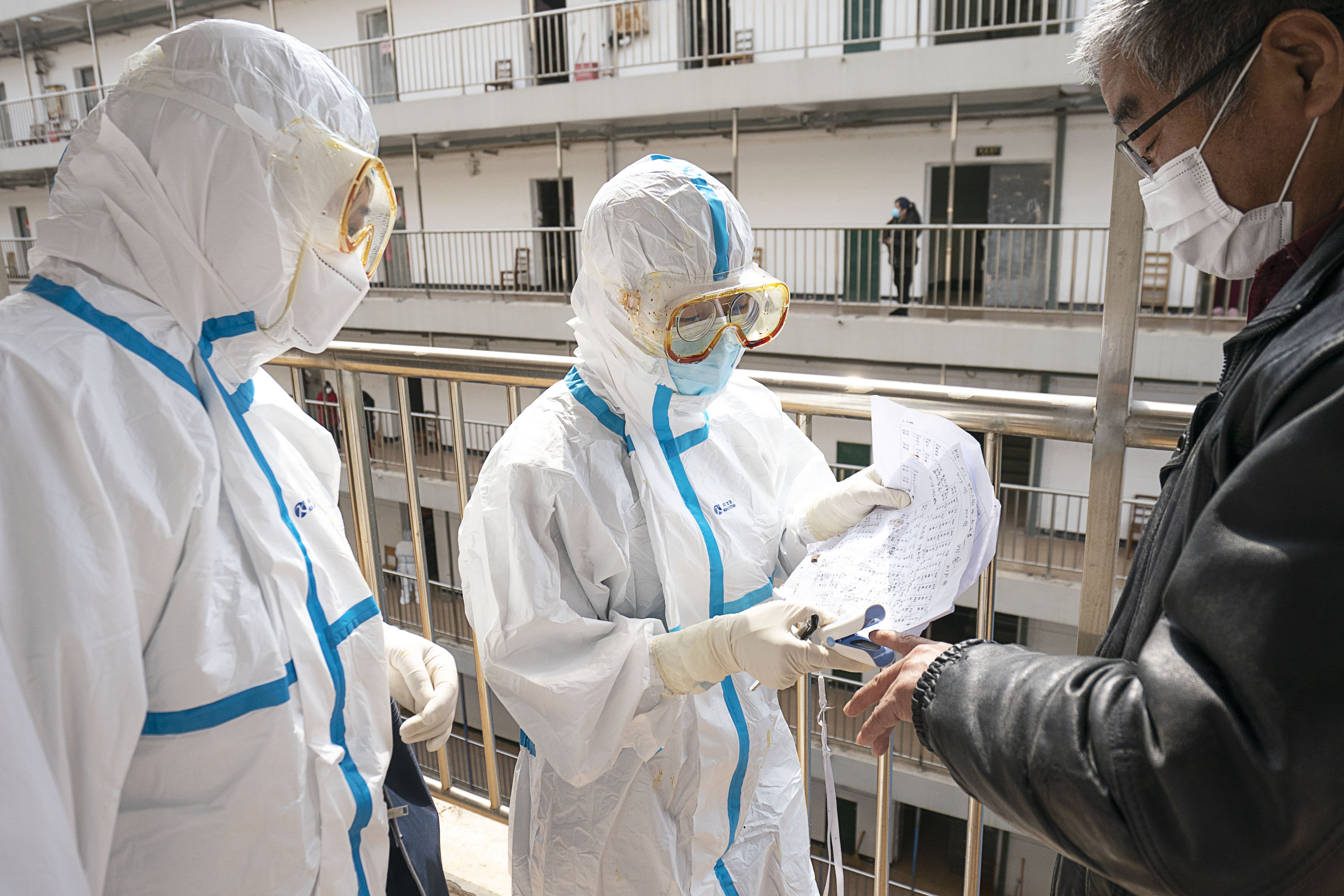
A cured coronavirus patient (front R) salutes to the medical workers after leaving the Wuchang temporary hospital in Wuhan, central China's Hubei Province, March 10, 2020. (Xinhua/Wang Yuguo)
Since a few discharged patients tested positive, more than 30,000 cured patients in Wuhan are suggested to undergo a further quarantine for 14 days.
WUHAN, March 12 (Xinhua) -- In Wuhan, capital of central China's Hubei Province and the epicenter of the COVID-19 outbreak, more than 30,000 patients have been cured and discharged from hospital. In line with the country's latest diagnosis and treatment scheme, the discharged patients are suggested to undergo a further quarantine for 14 days.
Hubei provincial health commission said, as of March 10, there are over 35,000 beds in what are called "recovery stops" to quarantine recovered patients in Wuhan. The quarantine venues have been re-purposed from hotels, student dormitories, or newly-built makeshift infrastructure.

A cured coronavirus patient receives blood oxygen checking at a quarantine venue based in the Wuhan Vocational College of Software and Engineering in Wuhan, central China's Hubei Province, March 10, 2020. (Xinhua/Xiong Qi)
Hubei reported eight new confirmed COVID-19 cases on Wednesday, all of which were in Wuhan. This was the first time that the number of daily new confirmed cases dropped to a single digit in the city. Although the spread of the novel coronavirus has been basically curbed in Hubei and Wuhan, the prevention and control task remains arduous.
Since a few discharged patients tested positive, medical experts call for follow-up efforts to manage and supervise discharged patients. The measure is aimed at ensuring the health and safety of those patients, as well as their family members.
By Wednesday, Wuhan has discharged 34,094 patients from hospitals after treatment, according to statistics released by Hubei provincial health commission. More than half of them are still under medical observation at these "recovery stops."
In Wuhan's Jianghan District, the Bolaihua Hotel has been used for quarantine since Feb. 24, and all the 52 rooms were filled with discharged patients at its peak.
Some districts took over student dormitory buildings for use and renovated four-bed rooms to accommodate one patient each. The beds and cabinets are covered by protective packaging. Daily necessities, including water bottles, slippers, and toilet paper, are provided for each patient.

A volunteer conducts disinfection at an empty room of the quarantine venue based in the Wuhan Vocational College of Software and Engineering in Wuhan, central China's Hubei Province, March 10, 2020. (Xinhua/Cheng Min)
Qiaokou District built a new prefab building with 400 beds and equipped with water supply, electricity and toilets.
Those temporary venues also have medical workers who conduct conventional medical checkups and provide psychological counseling for the patients.
Local health authorities said that the first batch of cured patients admitted to such venues in late February had been released after the 14-day isolation.
Patients who show symptoms of fever or chest pain at these venues will be readmitted to hospitals for treatment.
"The novel coronavirus is a newly-discovered virus, and the current understanding of it is far from enough. We should strengthen post-discharge follow-up visits, create a patient case base to timely spot and report health threats," said Liu Bende, head of an experts' group in Jiangxia District. ■



